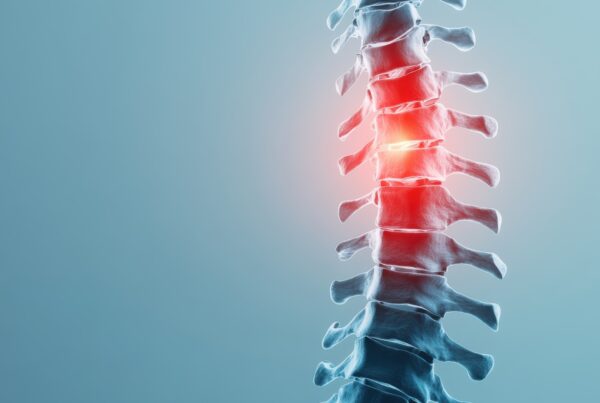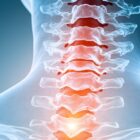Hemifacial spasm is a condition that can cause significant pain and disability, and it can disrupt your normal active lifestyle. If you are dealing with hemifacial spasm symptoms, visit your doctor right away to get on the right path to treatment. The first step in dealing with the condition: understanding the primary symptoms of hemifacial spasm.
Many people with hemifacial pain and spasm experience different symptoms. These can range from mild to severe, and the symptoms can be slightly disruptive to your day-to-day activities, or they can completely derail any attempt at comfortable work or recreation.
If your doctor diagnoses you with hemifacial spasm, you should take the time to learn about the symptoms and the things that cause the condition. Learning about your condition can help get you started on the right treatments for it.
Causes of Hemifacial Spasm
Hemifacial spasm is caused by irritation of the 7th cranial nerve, called the facial nerve. This nerve is located in your skull, arising from your brainstem. You have two facial nerves – one on each side of your face. The job of the facial nerve is to move the muscles on one side of your face.
Rarely, irritation of your facial nerve may happen as the result of a problem like a tumor, stroke or disease like multiple sclerosis. However, most often, hemifacial spasm symptoms are caused by irritation of the facial nerve by a neighboring artery. The artery rubs against the nerve, resulting in hemifacial spasm symptoms.
Diagnosis of hemifacial spasm is typically made by a facial spasm specialist or doctor prior to visiting a neurosurgeon.
Typically, diagnosis can be made by your history of onset pain and the behavior of your hemifacial spasm symptoms. Your doctor may order a CAT scan or MRI of your brain to rule out any other possible lesion that may cause facial pain or spasm.
Because so many different problems can cause hemifacial spasm, getting an accurate diagnosis of your condition can be difficult. That is why it is important to see your doctor right away if you have any facial symptoms and suspect hemifacial spasm.
Symptoms of Hemifacial Spasm
There are many different symptoms of hemifacial spasm. These symptoms typically include:
- Slight twitching of your eyelid
- Twitching of the muscles on one side of your face near your cheek and mouth
- Pain behind one ear
- Large scale spasms reaching from one eye to your jaw and chin
Any sort of facial spasm may be a sign of facial nerve irritation. If the spasm is accompanied by an electric-like or burning sensation, trigeminal neuralgia may be suspected by your doctor.
While a description of your symptoms may help your doctor accurately diagnose your hemifacial spasm, the things that trigger it can help confirm the diagnosis. One of the main components of treatment for hemifacial spasm is to learn about what things trigger your symptoms. Triggers of facial pain and spasm may include:
- Rubbing gently against your face
- Shaving
- Chewing hard food or excessive chewing
- Brushing your teeth
Many times your symptoms can come on for no apparent reason. This can make dealing with your condition difficult as you have no control over when the symptoms will start or how long they will last.
If you have been diagnosed with hemifacial spasm, your doctor will likely have you take medication to help control your symptoms. If your symptoms are persistent and if medication does not give you relief, you should consult with a neurosurgeon who can offer you definitive treatment for your condition.
Surgical Options for Hemifacial Spasm
Surgery for hemifacial spasm is considered the gold standard treatment for the condition and most patients who undergo surgery enjoy a full recovery.
- Microvascular decompression: Microvascular decompression, or MVD, is a type of brain surgery where your neurosurgeon makes a small incision into your skull to locate your facial nerve near your brain stem. Then, a small Teflon pad is placed between your facial nerve and its neighboring artery, decompressing the nerve and eliminating your hemifacial spasm.
Each surgical procedure carries with it its own set of benefits and risks. Finding the right neurosurgeon for your specific condition is the best thing you can do to start treating your hemifacial spasm.
Finding Treatment
When considering surgery for hemifacial spasm, you should find a top-rated and trusted neurosurgeon. There are easy ways to find the right surgeon for you, including:
- Asking family members and friends
- Getting a referral from your physician
- Searching the internet for reviews of neurosurgeons who treat facial conditions
The best way to find the right doctor to treat your hemifacial spasm is to have a face-to-face meeting.
Your neurosurgeon should treat you with respect and kindness and should answer all of your questions about surgery. He should take the time to explain the risks and benefits associated with surgery, and he should help you feel at ease with your decision to have surgery for your facial nerve condition.
Dealing with facial pain and hemifacial spasm can be a difficult thing to do. If you suspect you have the condition, see your doctor right away and learn about the symptoms of hemifacial spasm and trigeminal neuralgia. By understanding your symptoms, you can easily start on the road to recovery.


About Dr. Anthony D'Ambrosio
Dr. Anthony D'Ambrosio is an accomplished neurosurgeon in North Jersey and a proud member of Neurosurgeons of New Jersey practicing primarily out of their Ridgewood office conveniently located on East Ridgewood Avenue. Dr. D’Ambrosio focuses his clinical practice on brain tumors, nervous system disorders, and facial pain disorders. He has expertise in a variety of complex surgical and radiosurgical techniques as well as minimally invasive procedures intended to successfully treat complex diseases of the brain. These techniques include micro-neurosurgery, microvascular decompression surgery and Gamma Knife radiosurgery. He's authored over 25 peer-reviewed journals and is the recipient of many awards.

About Dr. Rupa Juthani
Dr. Juthani has expertise in a wide range of oncologic conditions including pituitary adenomas, skull base tumors, brain metastases, and gliomas. Dr. Juthani has unique training in minimally invasive approaches including endoscopic pituitary and skull base surgery, laser surgery, Gamma Knife radiosurgery, and fluorescence guided surgery.
Please call today to schedule a consultation with me.
(551) 284-3265
Request a consultation with Dr. D'Ambrosio






